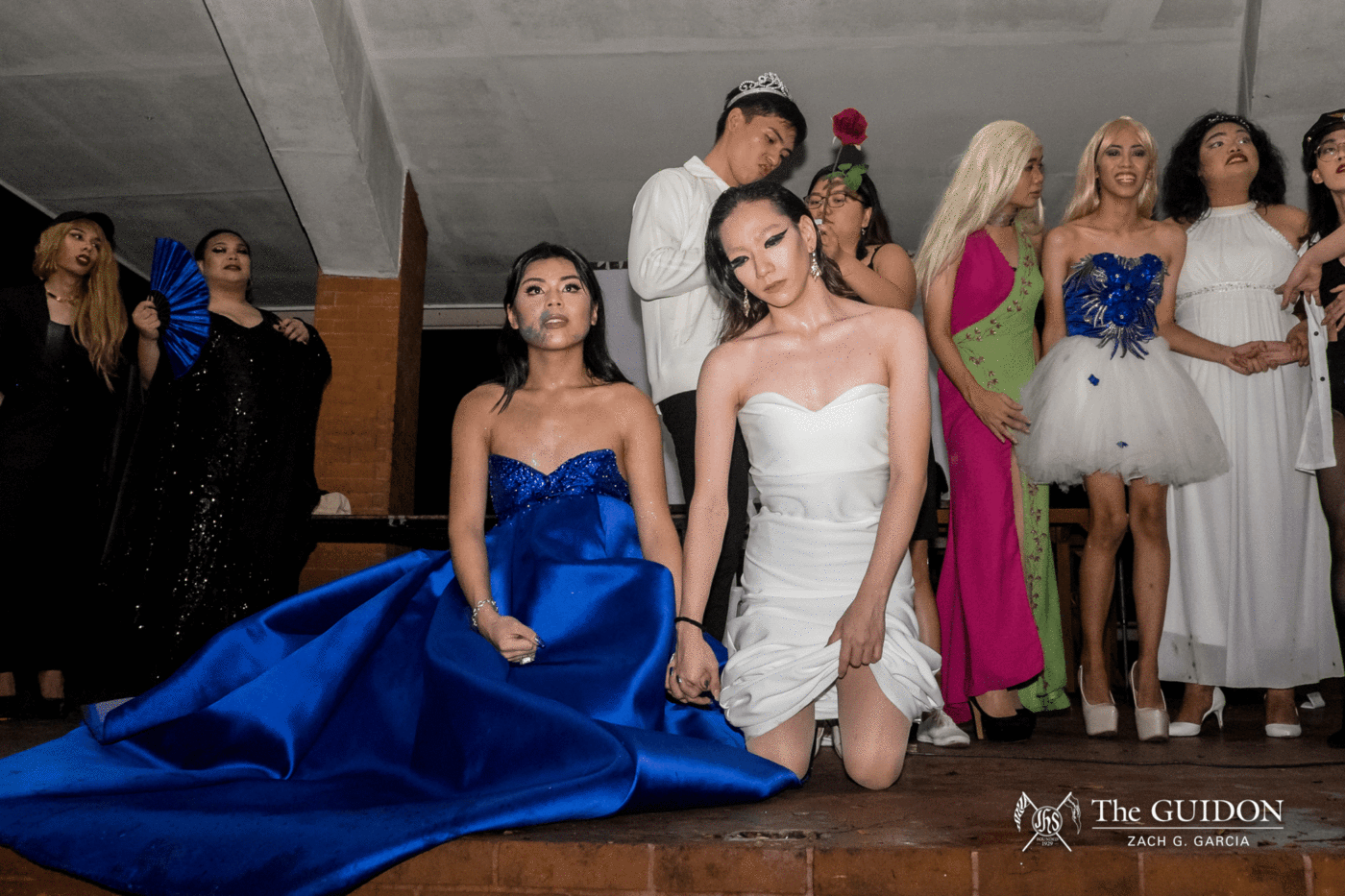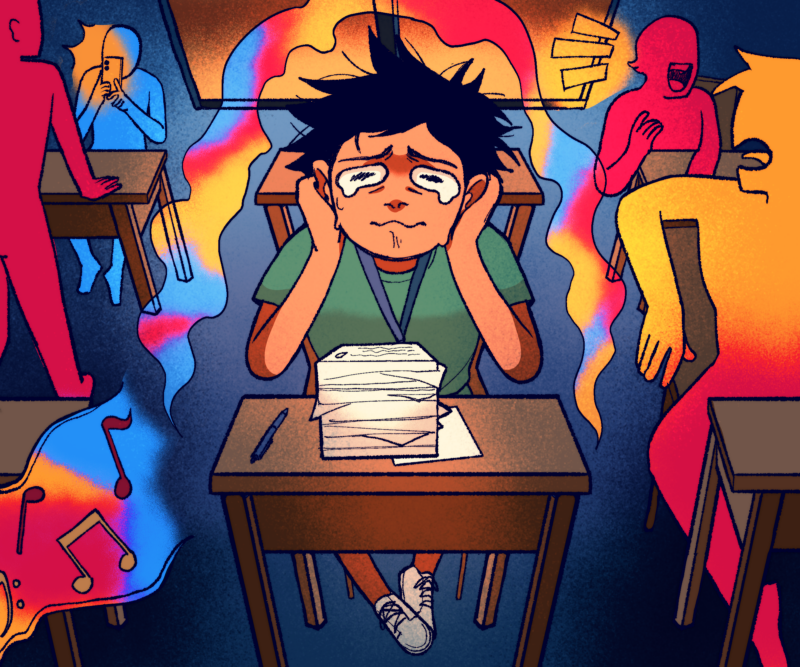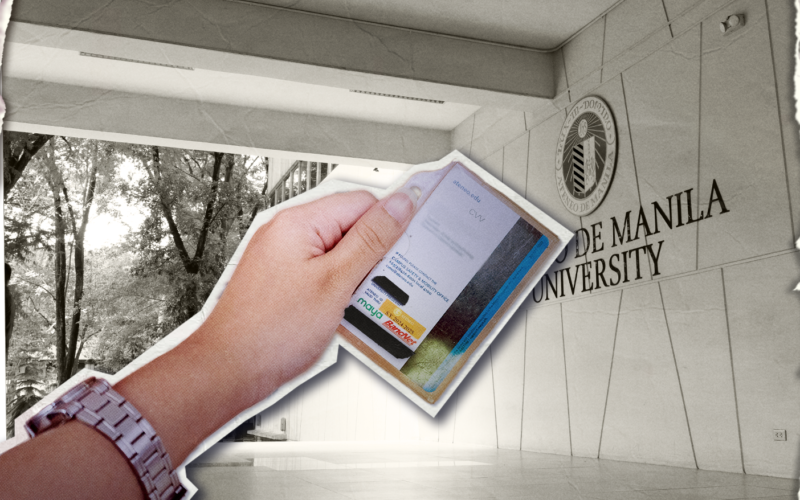AMID THE conservative national landscape, many LGBTQ+ students find solace in the Ateneo’s liberal community. There, students are able to stand with pride in school-wide protests such as One Big Pride and let their colors run free in wide-scale events like the freshman Orientation Seminar (OrSem).
Over the years, the University has continually developed this inclusive environment for queer students. While the LS community has somewhat shed its fraught history of LGBTQ+ discrmination, it has not quite escaped just yet. Thus, the fight rages on as the renewed calls for LGBTQ+ representation reveal how much progress the University has made over the past years—and how much work remains.
Finding the end of the rainbow
For students like Jo* (3 AB COM) who grew up in a conservative household, discussions on being queer were often kept in hushed tones.
Coming of age, she was cautious when it came to navigating the big questions in life that involved her sexuality while keeping her household’s traditional values in mind. When it came to choosing a college to enroll in, she decided carefully in fear of selecting a university whose values did not align with her family’s.
In the end, Jo chose the liberal Ateneo. She felt replete, expecting both the school community and the administration to embrace her queerness with open arms. True enough, Jo appreciates the initiative her professors took to curate a space for LGBTQ+ students like her by addressing them with their preferred names and pronouns.
However, not all of her expectations met reality. Jo still had to deal with blockmates who were not open to the idea of certain sexualities and genders outside the norm. “When it [comes] to the intimate circles of a liberal university, there’s actually more of a chance… to be on the receiving end of [these] microaggressions,” she shares.
This discrimination is similarly found outside of the classroom, and Jo says that the University has yet to show support for LGBTQ+ students outside of school-wide events such as One Big Pride and OrSem.
Cracks in the porcelain
Students like Dollhouse’s Former Vice Ganda Jude Buendia (5 AB DS) are among those who led the way in advocating for greater LGBTQ+ representation and creating safe spaces for those like Jo. Although the organization does not consider itself to be the school’s representative group of the LGBTQ+ community, students think the opposite, given the group’s unshakable impact in the LS.
To this effect, Buendia recounts memories of their activities—one of them being the elections, where they traded speeches akin to those found in comedy bars, and another being their yearly performances for the Company of Ateneo Dancers’ elaborate Rhythm-in-Blue Dance Competition. Despite the nightly rehearsals, Buendia enjoyed the experience, comparing it to a family simply doing an activity they love.
“I enjoyed my queerness in Dollhouse, and that is something that every queer person has to experience,” he adds.
However, the pandemic has made it difficult for Dollhousers to reach out to the new batch of LGBTQ+ undergraduates and extend their safe space to them. Despite this, Buendia assures that Dollhouse is still in operation without the extravagant activities and elections that typically happen on-site since they take the time to bond with each other as a barkada.
Dollhousers are widely known for this image of camaraderie, but Sanggunian Commission on Gender Equality (CGE) Co-Commissioners Andrei Narciso and Althea Santos say that some queer Ateneans have actually felt detached from Dollhouse. This is because of the inherent diversity within the LGBTQ+ community, leading some to feel like they didn’t meld with the Dollhouse barkada dynamic well.
Coloring inside the lines
Unfortunately, the lack of queer representation for the diversity of students within campus spaces ties into the issue of LGBTQ+ discrimination in the LS.
“Ang focus ng Western notions of sexuality and gender is simplistic—binary palagi. Mayroong straight, mayroong hindi, mayroong tama, mayroong mali,” Interdisciplinary Studies Instructor Skilty Labastilla says.
(The focus of Western notions of sexuality and gender is simplistic—always binary. There are those who are straight, there are those who aren’t, there’s a right and wrong.)
These conservative notions that trace back in history have become embedded in Philippine society, breeding tolerance rather than full acceptance of the LGBTQ+ community. While queer individuals are tolerated in certain parts of society, they still remain largely marginalized.
To ensure inclusivity through acceptance of people with different SOGIE, Labastilla encourages starting conversations within campus with the help of stakeholders such as the Sanggunian and the CGE. He also urged more conversations on issues the LGBTQ+ community deems important, such as the common mistake of deadnaming transgender individuals today.
While combating such discrimination, Labastilla also emphasizes geographical and physical presence as key to ensuring safety for the diversity of queer students in the University.
For example, he stresses the significance of fostering a space of openness within campus. Doing so provides “comfort, solace, and a sense of home” for many queer individuals who may not receive the same acceptance elsewhere.
Dollhouse, in particular, had played a significant role in actualizing this. Labastilla recognizes Dollhouse’s efforts in building physical safe spaces for the Atenean LGBTQ+ community. Formerly spotted in either Doghouse or outside the Rizal Mini Theater—where they are most visible—their prominent presence within the LS provided a visible safe space for the LGBTQ+ community to forge friendships and be unabashedly queer.
Similarly, Buendia also suggests allowing LGBTQ+ students to build their own safe spaces by simply grouping up and having fun because these interactions cannot be manufactured by groups who don’t identify as queer. By doing this, students are free to create a space where they feel truly represented.
The climb over the rainbow
Today, queer individuals at large can find safe spaces beyond the institutions they’re involved in. They are able to feel represented on a variety of platforms, no longer feeling tied to a small number of internal groups but to a wide array of faces or influencers in social media. Ultimately, this shift recognizes that LGBTQ+ Ateneans are also students with their own individuality and advocacies outside of their often typified sexuality. “Social media is geared towards individuals and we’re now finding [a diverse range of] individuals we admire,” Narciso emphasizes.
As the influence of a more diverse LGBTQ+ image surges in social media, safe spaces for queer Ateneans also grow in the real world. They now extend beyond Dollhouse and are scattered throughout organizations and offices such as the Gender Hub and the CGE, itself.
This shift manifests in Jo’s experience as she was able to find solace with her organization, the Ateneo Blue Repertory. “Besides the initial high school friends I sought out, I also tended to lean towards my organization of Blue Rep because of those like-minded individuals, whom I didn’t have to have the burden of educating,” she says.
Since org culture is a significant part of the Ateneo student experience, the CGE has also helped student organizations within the LS to build safe spaces for LGBTQ+ Ateneans through initiatives like gender sensitivity programs.
“We’re finding [other] organizations which we identify with kasi nga we also need to recognize that being gay, it’s an aspect of who we are, but it’s not all that we are. We are more than just gay individuals,” Narciso highlights.
In their bid to fortify safe spaces, one of the CGE’s main initiatives is to lobby for an LGBTQ+ sector that would not only be a branch of the CGE, but will also be an officially recognized sector in the Sanggunian Central Assembly where they can legislate their advocacies. There were talks regarding this in the years prior to Narciso and Santos’ term. However, they stated that it did not materialize because they were “not left anything to work with” by the time they took over the CGE.
Today, the CGE continues to craft plans for the sector through Focus Group Discussions, interviews with previous Dollhouse members, and extensive research on the sector.
As this happens, the fight for more diverse LGBTQ+ representation rages on within and beyond the confines of the University. In mounting the inequalities stemming from conservative perceptions, Labastilla hopes that the Ateneo will further pave the way toward better LGBTQ+ inclusivity and representation.
“Kung sana mas maraming ganung klaseng institusyon, especially in non-secular institutions like Ateneo, it will create ripples. … That creates a big boost to the morale and self-esteem of the person na [alam niyang] may isang lugar siya na pwedeng puntahan,” he shares.
(If only there were more institutions like that, especially in non-secular institutions like Ateneo, it will create ripples. That creates a big boost to the morale and self-esteem of the person that [they know] there’s one place they can go to.)
*Editor’s Note: The name of the interviewee was changed to protect their identity and privacy.







